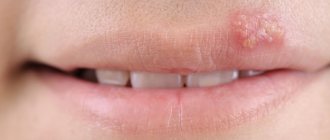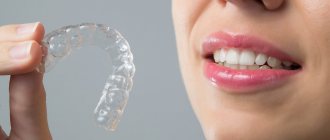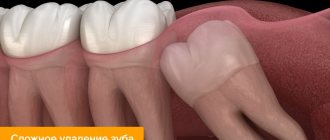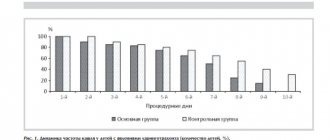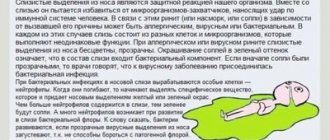- Why does snot run down the back of the throat?
- Symptoms of postnasal drip
- Complications of the syndrome
- How to remove nighttime mucus drainage
- Treatment of snot in the throat of a child
- Treatment of snot in the throat in an adult
When snot runs down the back of your throat, the condition is called postnasal drip or postnasal drip syndrome. Why does this condition occur and what are the complications?
Normally, a small amount of mucus is constantly present in the nasopharynx, which is produced by the exocrine glands. The mucus mixes with saliva and moves further into the digestive tract. Mucus is necessary to moisturize and cleanse the nasal cavity and nasopharynx from foreign substances that enter the respiratory tract with air. This process is absolutely physiological and does not cause any inconvenience. Discomfort occurs when the amount of mucus increases and its viscosity changes. Postnasal drip syndrome is a pathological condition and requires attention from a specialist.
Why does snot run down the back of the throat?
The pathology accompanies a number of ENT diseases. Possible reasons why snot runs down the back of the throat are:
- proliferation of adenoids;
- congenital anomalies of the structure of the mucous membrane of the posterior wall of the nasopharynx;
- deviated nasal septum;
- rhinosinusitis of various etiologies accounts for more than 50% of identified clinical cases;
- entry of a foreign body into the nasal cavity.
Women may experience the appearance of snot in the throat during pregnancy. A similar situation arises for people who work in hazardous industries or live in regions with poor ecology, or smokers. Chemical fumes, tobacco smoke, and particles of household chemicals entering the respiratory tract lead to irritation of the mucous membrane, so mucus production increases and snot flows into the throat.
The problem of leakage appears when taking certain medications. In particular, such a situation may be associated with the uncontrolled use of vasoconstrictor nasal drops. While the patient is using these medications, postnasal drip of mucus is observed. After discontinuation of the drug, mucus production normalizes and unpleasant symptoms disappear.
Some people experience snot running down their throats when the temperature and humidity change. When the microclimate is normalized, the human condition improves.
In some cases, the appearance of postnasal drip in adults and children is in no way associated with ENT diseases. The cause is pathology of the digestive organs, which is accompanied by gastroesophageal reflux. The contents of the stomach are regularly thrown into the esophagus, which causes belching, sore throat, and irritation of the mucous membrane. For this reason, mucus production increases and postnasal drip appears.
In some patients, this symptom is accompanied by endocrine pathologies leading to hormonal imbalance.
1.General information
It would seem that any person who has had a runny nose at least once is familiar with this uncomfortable sensation: somewhere in the depths of the nasopharynx, something has accumulated and interferes with every swallow, and it is necessary to get rid of it urgently, by any means... Considering that a runny nose is the most common from painful human conditions, we can safely assume: this feeling of “internal runny nose” is known to everyone, and it is known so well that there seems to be nothing to talk about here. In the end, the mucous membranes of the nasopharynx normally produce large volumes of secretion, some of which flows down the back wall, is swallowed with saliva and food, sometimes accumulates - for example, after a night's sleep - but, in general, does not create any special problems.
However, the flow of moisturizing and bactericidal mucus along the posterior nasopharyngeal wall into the laryngopharynx is not always “normal” and problem-free. It's all about the causes of hypersecretion, the composition and properties of mucus, and its quantity.
Rhinitis (runny nose) and accompanying rhinorrhea (profuse discharge of mucous discharge from the nasal passages) is, by and large, not a disease. This is a symptom, a sign of a particular pathology. Sometimes this symptom is quite expected and really does not have any particular clinical significance, but in some cases it requires special attention and examination. For such cases, a special term has been introduced, which is found in the literature in several synonymous spellings: postnasal drip syndrome (English: “postnasal drip syndrom”), retronasal drip (sometimes written “drip”), retronasal discharge, internal runny nose, postnasal syndrome. It was first described at the end of the 18th century under the name “chronic pharyngeal catarrh.”
A must read! Help with treatment and hospitalization!
How to remove nighttime mucus drainage
During the daytime, the clinical manifestations of the disease are less pronounced, since the body is in an upright position. The person simply swallows the bulk of the discharge. At night, when the body is in the “lying” position, mucus flows to the reflexogenic areas of the laryngopharynx. This irritates them and leads to severe coughing. For this reason, nighttime mucus discharge causes serious discomfort and interferes with normal rest.
To get rid of the problem, you need to identify its cause by contacting a specialist. The doctor may prescribe rinsing the nasal cavity, irrigating the nose with a spray with silver ions, or steam inhalation. You should also keep your sleeping area humid and drink plenty of fluids to help relieve postnasal drip at night.
Particular runny nose. What is vasomotor rhinitis and how to get rid of it?
What is vasomotor rhinitis and how to get rid of it? What consequences can result from improper treatment of vasomotor rhinitis? These and other questions are answered by the leading specialist of the National Medical and Surgical Center. N. I. Pirogova, candidate of medical sciences, associate professor, otorhinolaryngologist Oleg Aleksandrovich Golubovsky.
— Oleg Alexandrovich, what is vasomotor rhinitis? What is its feature?
— Let's start with the fact that a runny nose can be acute and chronic. Vasomotor rhinitis is a variant of chronic runny nose. If an acute runny nose is not treated adequately, it can become chronic. First, nasal breathing becomes difficult, then mucous discharge appears, which can discharge from the nose to the outside or flow down the back wall of the throat, which happens most often.
In terms of symptoms and complaints, vasomotor rhinitis is very similar to allergic rhinitis. Allergic rhinitis is also accompanied by swelling of the nasal mucosa, but this is a seasonal disease, that is, it occurs during the flowering period of plants, or if there is an allergy to house dust, library dust, animal hair, etc.
- Let's talk about the causes of vasomotor rhinitis. Why is it developing?
— There are two main reasons. The first is a consequence of untreated or undertreated acute rhinitis. And in second place is deformation of the nasal septum. If there is an arched curvature of the nasal septum to the left or right, a complex curvature of the so-called S-shape or a single ridge, then the mucous membrane is irritated by the incorrectly moving air flow. The air entering through the nose during normal breathing receives some turbulence. Thanks to this, the air is moistened, warmed, and dust from it settles on the mucous membrane of the nasal cavity. That is, the air enters the lower respiratory tract already warmed, more or less cleared of dust and humidified. And when there is a mechanical reason (deformation of the nasal septum), the air flow changes, thereby irritating the mucous membrane, the nasal turbinates swell, and a picture of vasomotor rhinitis gradually develops.
Read more about a deviated nasal septum in our article: Deviated nasal septum: leave it or fix it?
— What are the symptoms of vasomotor rhinitis?
- First of all, this is difficulty in nasal breathing and mucous secretions that flow down the back wall of the pharynx, as a result of which a picture of pharyngitis develops (inflammation of the back wall of the pharynx). A person complains of a feeling of a lump in the throat, a feeling of viscous mucus that is difficult to cough up. As the patients themselves say when they come for consultations, “a mucus factory”, mucus flows in a stream. These are all signs of vasomotor rhinitis. The sense of smell is also often impaired. Due to swelling of the mucous membrane, the olfactory zone suffers, and the person ceases to perceive odors - either all or selectively.
— How to distinguish vasomotor rhinitis from a common runny nose?
— There is no concept of a “common runny nose.” There is acute and chronic runny nose. If we say that it began suddenly and lasts, let's say, no more than a month, then this may be a condition that is considered an acute runny nose. And there is a runny nose, which becomes chronic.
Chronic rhinitis can be vasomotor and hypertrophic. Stepping back a little, I’ll explain. Each half of the nose has three conchae: inferior, middle and superior. The top one is so small that it is not visible. We see first of all the inferior nasal concha and the middle one (it is smaller in size, but visible). It is the inferior nasal concha that swells, making nasal breathing difficult. Why do nasal breathing difficulties occur? And what is the inferior nasal concha anatomically? It has a small bone base, which is covered with tissue rich in blood vessels. With the slightest inflammatory process (chronic or acute), the vessels in this area dilate, blood flow increases, and the shell swells sharply, increasing in size several times, filling the entire common nasal passage. If this is vasomotor rhinitis, then after instilling any vasoconstrictor drops, the concha contracts, the result is a short-term improvement in nasal breathing. If this is already hypertrophic rhinitis, then the concha does not shrink, remains as large and the nose breathes just as poorly.
— How is the diagnosis of “vasomotor rhinitis” made? What examinations are carried out to identify this pathology?
— First, we base it on the patient’s complaints, which we discussed above. The second is an examination of the nasal cavity. We see swollen inferior turbinates. Usually, irrigation or application (application) of a solution of adrenaline (or xylometazoline-based preparations) is carried out on the mucous membrane. If the shell has shrunk, then the condition corresponds to vasomotor rhinitis. If it has not decreased, it is already hypertrophic rhinitis. There are practically no other diagnostic options.
— Tell us about the methods of treating vasomotor rhinitis in children and adults
“The treatment of this pathology in children and adults is not much different. As a rule, this is, firstly, rinsing the nose with sea water. If it is not possible to irrigate with sea water, then you can use saline solution. What do these solutions do? They wash the mucous membrane, remove excess mucus and force the goblet cells to empty. These are cells that are part of the mucous membrane and produce mucus. They empty themselves, and due to this the mucous membrane contracts somewhat. Nasal breathing improves to a small extent.
After irrigation with sea water, we always recommend using certain hormonal drugs from the group of glucocorticosteroids. They can be used from childhood (from about two years old). Vasoconstrictor drops cause a sharp constriction of blood vessels, and the nose begins to breathe almost immediately. In contrast, a hormonal drug acts slowly, but gives a lasting effect. We do not recommend using vasoconstrictor drops for more than 7 days. At the first stage, this can be done, but if time passes, say, a week is approaching, then in any case the person needs to refuse these drops, replacing them with hormonal drugs.
In some cases, doctors resort to injecting the inferior turbinates with glucocorticosteroids. An injection is made, the tissue is saturated with a medicinal substance, and gradually, during the course of treatment, the shell contracts.
Physical therapy may also be indicated. But this is all conservative treatment. If it is ineffective, we suggest surgical treatment.
— What about traditional medicine? For example, the question is sometimes asked whether herbal treatment for vasomotor rhinitis is effective. What could you say about this?
— You can rinse your nose with a decoction of chamomile, for example, but it is not a panacea. In some cases, you can use some plant-based preparations containing, for example, eucalyptus oil, fir oil. But any oil drops are used for no more than 10–14 days, since they negatively affect the mucous membrane.
— In what cases is surgical treatment necessary? What operations are performed for vasomotor rhinitis and how are they performed?
— Surgical treatment is indicated in one hundred percent of cases when the conservative treatment we discussed is ineffective. How is surgery performed for vasomotor rhinitis?
There are quite a few types of surgical treatment. Firstly, laser destruction is carried out. A special surgical laser pulse strikes certain points of the inferior nasal concha, as a result of which the soft tissue is partially evaporated. As a result of this, the shell contracts.
Another method is ultrasonic disintegration using a special apparatus (it is produced by our industry). The electrode is inserted into the thickness of the inferior nasal concha; against the background of ultrasound, the concha is partially coagulated and partially evaporated.
The third is radio wave surgery. What is now popular and widely used. This is the impact on the sink with a radio knife (non-contact method). Coagulation occurs to some extent and plus evaporation of the soft tissues of the inferior turbinate.
And the fourth type of operation is the so-called lateropexy with vasotomy. How is this operation done? A kind of breaking of the bony base of the concha is performed and it is moved to a lateral position, i.e., from the plane of the nasal septum to the side wall of the nasal cavity. Then a vasotomy is performed: the soft tissue of the inferior turbinate is instrumentally peeled off from the bone base, which leads to a local disruption of the blood supply. Vasotomy is performed to reduce blood flow to the inferior turbinate.
— What could be the consequences if you ignore the symptoms of vasomotor rhinitis or try to treat it yourself?
— With poor nasal breathing, the brain lacks oxygen, which can lead to chronic brain hypoxia. This time. The person begins to snore at night. Because of this, his sleep suffers, and, in addition, snoring can disturb others. That's two. A person's sense of smell suffers. He ceases to perceive smells normally, which will also depress him. That's three.
In addition, with prolonged use of vasoconstrictor drops, the time of their effect is shortened, patients are forced to drip drops more often and increase the dosage. Over time, this leads to atrophy of the nasal mucosa, and the formation of perforation (defect) of the nasal septum is possible. This often manifests itself in the form of characteristic noisy or wheezing breathing through the nose. As perforation increases, deformation of the external nose in the form of subsidence of the nasal dorsum is possible.
What else could it be? Against the background of vasomotor rhinitis, sinusitis, such as sinusitis, frontal sinusitis, and ethmoiditis, can develop with any inflammation.
Read material on the topic:
How to treat sinusitis at home? What will an MRI of the sinuses show?
— Is it possible to get rid of this disease once and for all, or can it periodically bother the patient throughout his life?
— If a person has a deviated nasal septum, the symptoms of vasomotor rhinitis will persist. In such cases, we always tell the patient that it is necessary to undergo septoplasty, i.e. correction of the nasal septum. Then there will be an effect.
If the nasal septum is smooth, then courses of hormonal therapy and irrigation of the nasal mucosa with sea water can be repeated every three to six months. And there comes a time when a person has all the symptoms of vasomotor rhinitis.
If, nevertheless, there are relapses after a short period of time (a period with normal nasal breathing of no more than one month), or the conservative treatment carried out is simply ineffective, then the question of surgery is raised. After surgery, a lasting effect occurs, nasal breathing is restored. But if a person develops an acute runny nose after surgery, and he again did not treat it or treated it incorrectly, then the picture of vasomotor rhinitis may again appear. There are times when it is necessary to operate again.
It is extremely rare that postoperative complications may develop in the form of adhesions in the nasal cavity or perforation of the nasal septum. But this is a very small percentage.
— Oleg Alexandrovich, how to prevent the development of vasomotor rhinitis? Tell us about prevention
— If there is an acute runny nose, it is advisable to contact an ENT doctor so that he can examine the patient and prescribe treatment. In some cases, some drugs are used, in others, others. Treatment should be carried out comprehensively and always under the supervision of an ENT doctor. I repeat that vasoconstrictor drugs can be used for no more than seven days. If the cause of vasomotor rhinitis is a crooked nasal septum, then septoplasty is necessary.
Interviewed by Marina Volovik
The editors recommend:
Autumn ailments: allergic rhinitis in children Can’t breathe! How to treat a runny nose in children? What is ARVI?
For reference:
Golubovsky Oleg Alexandrovich
In 1986 he graduated with honors from the North Ossetian State Medical Institute, in 1988 – clinical residency in otorhinolaryngology. Currently, he is an otolaryngologist in the department of otorhinolaryngology of the National Medical and Surgical Center named after. N.I. Pirogova (Moscow), Associate Professor of the Department of the Institute of Advanced Studies of the National Medical Center, Candidate of Medical Sciences, doctor of the highest qualification category. Reception is conducted at the following addresses: Moscow, st. Nizhnyaya Pervomaiskaya, 65; at the “Clinic Expert” Vladikavkaz, Vladikavkaz, st. Barbashova, 64a (once every two months (by appointment)).
Treatment of snot in the throat of a child
If postnasal drip occurs in a child, a consultation with an ENT doctor is required. The specialist assesses the condition of the upper respiratory tract, collects information about recent diseases, congenital or acquired anomalies of the upper respiratory system. Hardware diagnostic procedures include: rhinoscopy, mesopharyngoscopy, radiography or CT. This allows you to identify the cause that triggered the flow of mucus into the throat and determine how to treat postnasal drip. When identifying an inflammatory process, it is important to determine its cause. A general blood test helps with this. In bacterial infections, leukocytosis with increased ESR is observed. Viral infections lead to neutropenia and lymphocytosis. Allergic reactions are promoted by eosinophilia.
In most cases, the pathology can be eliminated with conservative therapy. If the cause is rhinitis or sinusitis, it is important to determine the nature of the rhinitis. For bacterial infections, antibiotics are indicated. If the inflammatory process is caused by a virus or allergen, symptomatic treatment is used. If snot runs down the back of the throat, antihistamines and corticosteroids may also be used for treatment. They help relieve swelling of the mucous membrane and thereby relieve symptoms.
For severe coughs, antitussive drugs are prescribed: expectorants and other drugs.
Coughing up white mucus without coughing
Enveloping the larynx with white mucus without a reflexive attempt to remove it is a common reason for patients to see a doctor. Most often, this is pure physiology, not dangerous to health: unfavorable ecology, food irritating the mucous membranes, alcoholic drinks.
If, in addition to sputum, cold symptoms appear: runny nose, headache and fever, this is a reason to consult a doctor.
Most likely, acute respiratory infections provoked an exacerbation of a latent process, which is localized in the upper respiratory tract and does not manifest itself in anything other than hypersecretion of mucus. The pathology does not descend into the bronchi, so there is no cough. But such “innocence” may hide tumors of the nasopharynx, so consultation with a specialist is necessary.
For prevention purposes, any expectoration of white mucus without coughing for a couple of days is a reason to visit a therapist.
An examination with special equipment and a series of tests will allow you to determine the true cause of hypersecretion and prescribe therapy or send you to a specialized specialist.
Treatment of snot in the throat in an adult
Postnasal drip syndrome affects people of all ages. To find out how to get rid of snot in the throat, an adult patient also needs to consult an ENT doctor. The specialist will prescribe a set of examinations to identify the cause of the pathology and appropriate treatment.
What to do if the snot in the throat does not go away after taking medications? This situation may be caused by incorrectly selected therapy or structural abnormalities of the intranasal structures and paranasal sinuses. In this case, the doctor may choose a different conservative therapy regimen or recommend surgical treatment.
Patients with a deviated nasal septum undergo septoplasty. This is an endoscopic operation that is aimed at eliminating deformation of the nasal septum without changing the shape of the external nose. Thanks to this procedure, nasal breathing is restored and one of the main causes of rhinitis and sinusitis, which provoke postnasal drip, is eliminated.
If there are indications, the patient may undergo surgery to resect concha bullosa or remove a Thornwaldt cyst, a cyst-like formation in the nasopharynx. It causes postnasal drip, which is difficult to respond to conservative therapy. After the operation, the patient's condition usually returns to normal.
Without an examination, it is impossible to say how to treat snot in the throat, so this situation requires mandatory attention from specialists.
Other reasons
If sputum accumulates in the throat due to allergies, then you should take antihistamines (Suprastin, Cetirizine, Loratadine, Tavegil). Relief should occur within the first day of using them. If the symptom is caused by reflux and reflux of stomach contents, then treatment is prescribed by a gastroenterologist.
It will be individual for each patient (with the use of enzymes, anti-inflammatory drugs and dopamine receptor blockers).
You will also be interested in:
- How to treat a dry cough in an adult that lasts for a long time without fever
Pharyngitis
Pharyngitis is an infectious disease that is accompanied by severe damage to the oral mucosa and lymph nodes. Rarely occurs alone - most often pharyngitis is accompanied by acute inflammatory processes. A patient suffering from pharyngitis is faced not only with a dry throat, but also with an unpleasant soreness and tickling, a sensation of a foreign element in the nasopharynx, as well as a general feeling of fatigue and malaise. Most often, to eliminate the unpleasant consequences of pharyngitis, they resort to complex treatment - simultaneously with the use of medications, the patient is prescribed mineral therapy to normalize the condition of the mucous membrane in the pharynx, which is supplemented by herbal medicine (the use of medicinal herbs and infusions to irrigate the affected area of the pharynx).
Expectorants
An important point is the use of expectorants - they thin the mucus and help it separate from the walls of the mucous membrane. As a result, all the mucus comes out naturally with a cough. For the treatment of adults, you can use cough tablets, Ambroxol, Bromhexine, Libexin, Mucaltin, Lazolvan.
A faster and more effective drug is ACC, Acetsex. Cough and snot in a child’s throat are best treated with herbal expectorants - cough syrups Gedelix, Gelisal, Linkas. There is no need to drink an expectorant for a long time; 1-2 days are enough until the phlegm comes out.
Traditional methods for removing mucus from the throat
Many do not know what to do if there is snot in the throat, which cannot be treated with medications. Traditional medicine comes to the aid of patients, offering several effective methods to combat the problem:
You can reduce the amount of phlegm produced in the throat by using aloe leaf. It needs to be washed, crushed, mixed with honey and eaten with a spoon after meals. Take ½ teaspoon of eucalyptus, sage, chamomile herbs, pour a glass of boiling water, leave for 2 hours. Heat until warm, add a spoonful of honey, a few crystals of citric acid, gargle morning and evening. Using these herbs, you can make steam inhalations that have an expectorant effect.
Calendula flowers with honey will help relieve inflammation
Calendula petals will help reduce the formation of mucus, as well as relieve inflammation of the mucous membrane. They should be mixed with honey and eaten between meals.
During the treatment period, it is important to adhere to a dietary diet, completely eliminating fatty, fried, spicy and excessively salty foods from the patient’s diet. It is necessary to increase the amount of products containing vitamins E and C. Proper treatment will allow you to stop the pathological process in time, eliminating the likelihood of developing serious diseases.
If you have questions for your doctor, please ask them on the consultation page. To do this, click on the button:
Ask a Question
Often with pharyngitis, adenoids, rhinosinusitis, and after a cold, mucus accumulates in the throat.
The degree and severity of the disease does not depend on the cause; rather, they are determined by the neglect of the process. Accumulated snot in the throat causes a lot of inconvenience:
feeling of a lump in the throat; provoked cough; constant sensation and swallowing of mucus; the appearance of a runny nose; discomfort while talking and eating; bad breath if there is a bacterial infection.
Disease prevention
Despite the fact that dry throat itself is not an independent disease (it is just a symptom), it can and should be avoided by promptly implementing a set of preventive measures to maintain the health of the oral mucosa. You can do this as follows:
- Do not neglect daily oral hygiene. When brushing your teeth and gargling, a person easily gets rid of many pathogenic bacteria, which can cause complications and even an infectious disease if not treated properly.
- Monitor the condition of the throat mucosa. If you observe the first signs of dryness or pain, immediately consult your doctor.
- Avoid unhealthy habits, particularly smoking. Stay outdoors more often; if you need to stay indoors for a long time with dry air, use a humidifier.
- Gargle regularly.
- Conduct herbal medicine at home - prepare plant decoctions and natural teas. They have a beneficial effect on the condition of the oral cavity, relieving a person of dry throat even in the bud of the disease.
Traditional methods
Aloe will help treat a runny nose and cough. It is necessary to mix freshly squeezed juice of one aloe leaf in equal quantities with honey. The resulting medicine is eaten twice during the day.
Propolis. Propolis can be used to lubricate the throat and also gargle. You need to prepare an alcohol tincture in a ratio of 1:3, leave for 7 days. An easier option is to buy a ready-made tincture at a pharmacy. You can put a piece of propolis in your mouth and chew it for several hours.
Coltsfoot. A decoction of the leaves of the plant, which is drunk three times a day, ½–1 cup with honey, will help remove thick mucus and get rid of a lump in the throat. Every day you need to make a fresh decoction.


